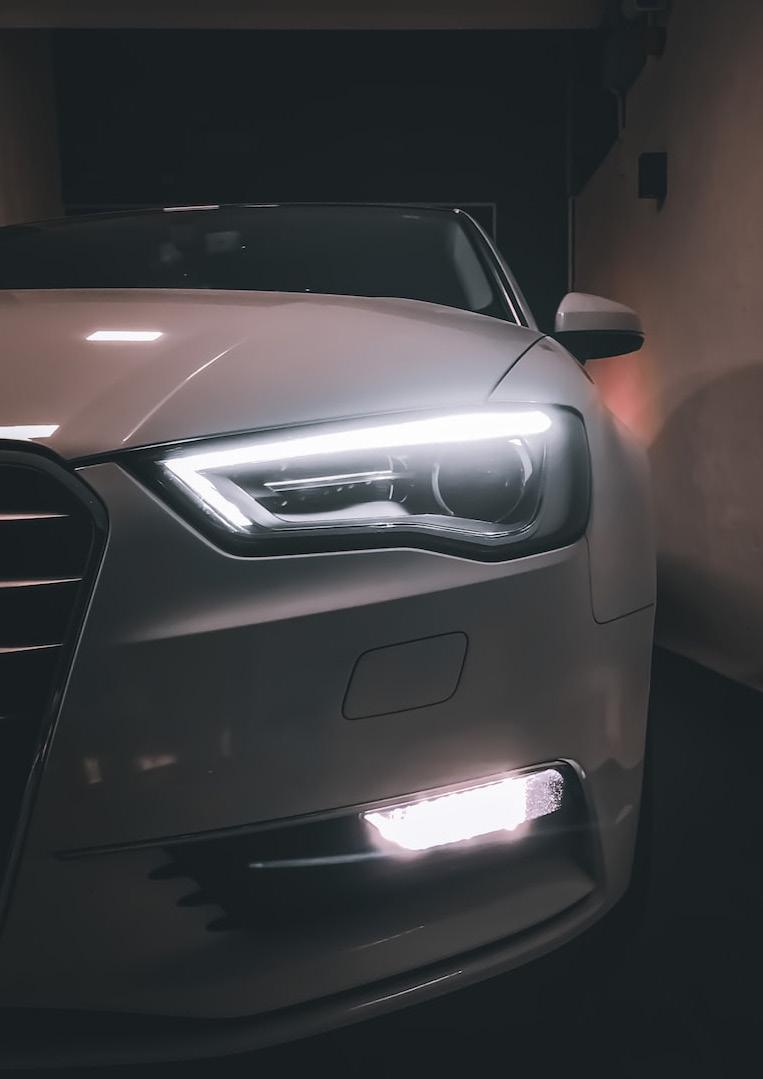
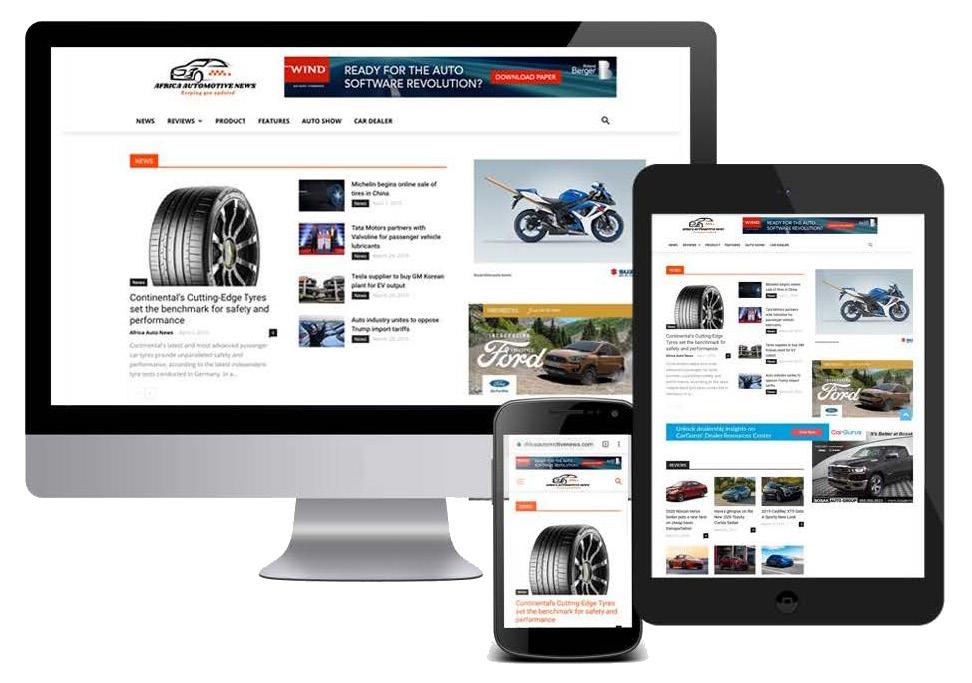


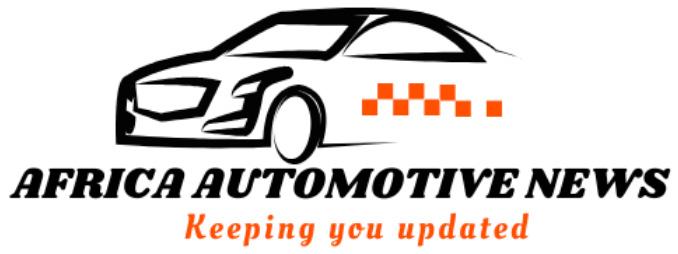
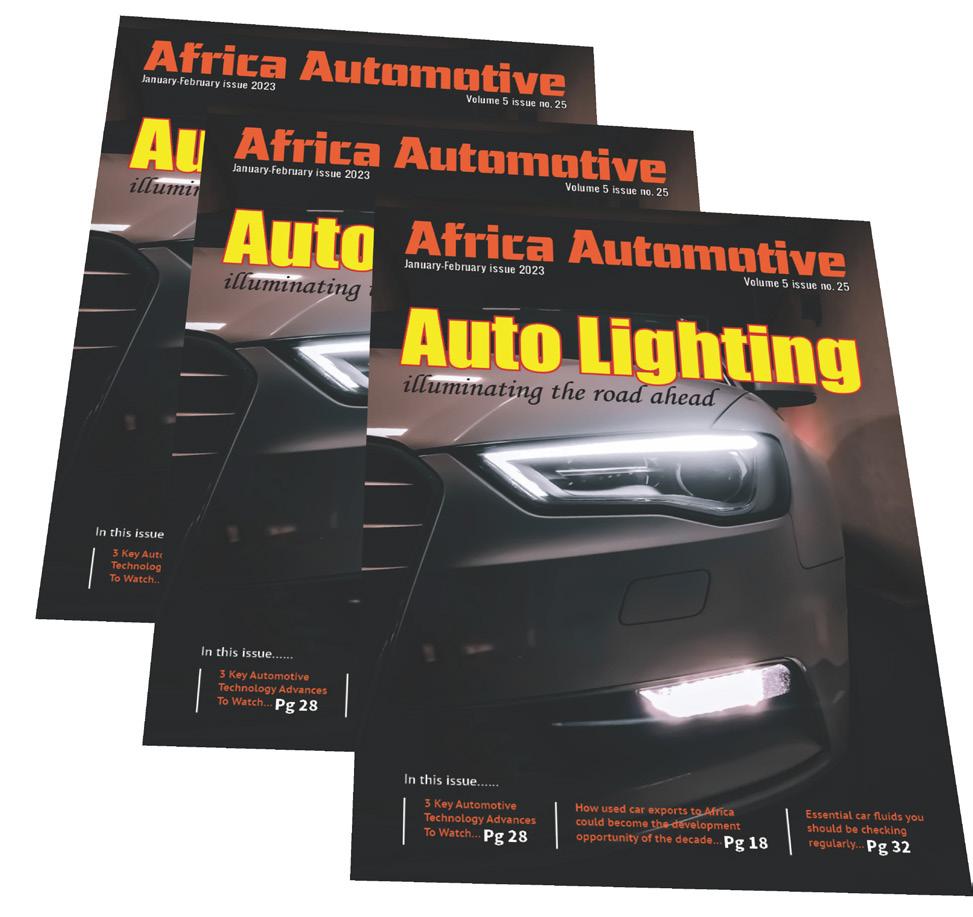

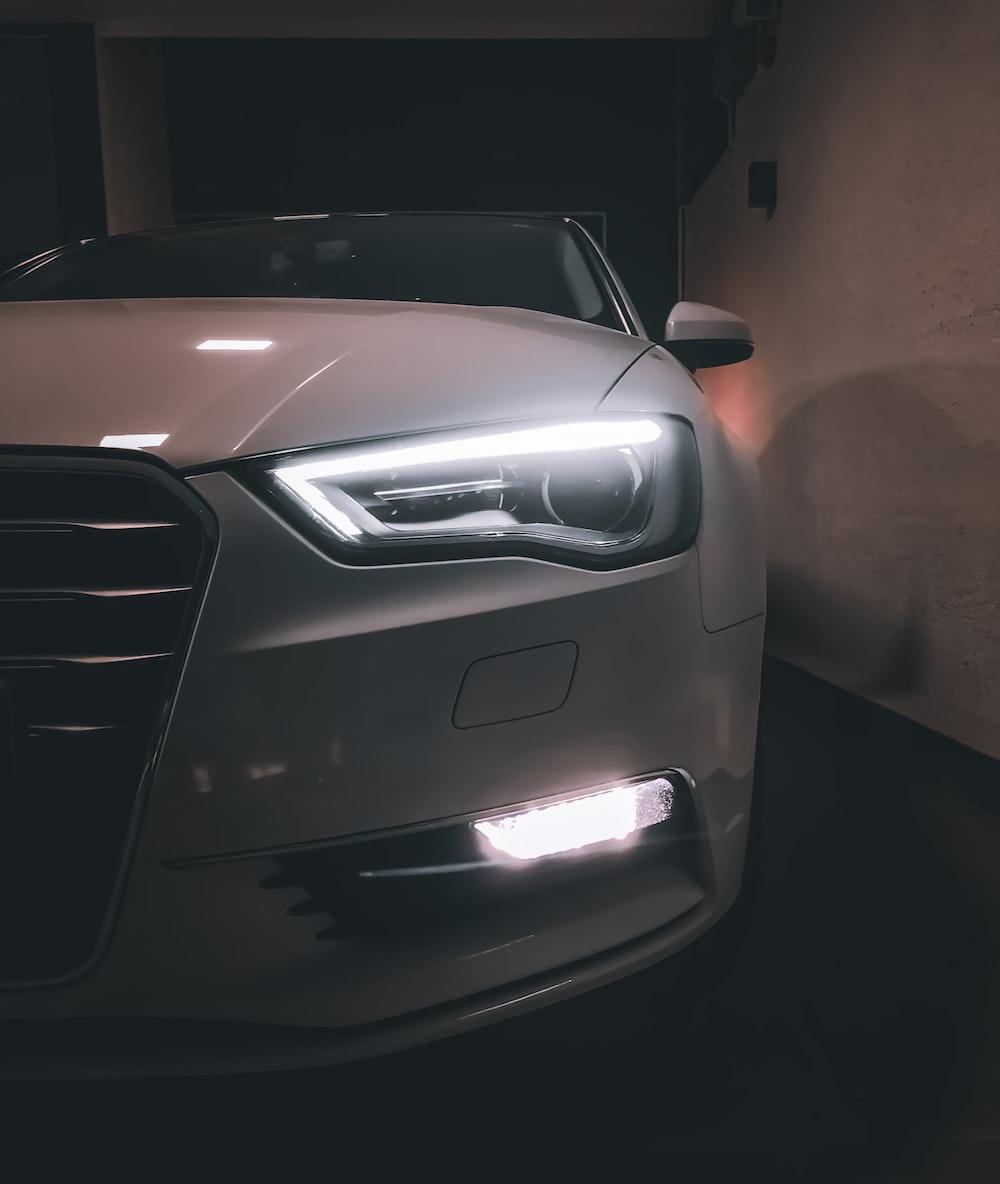
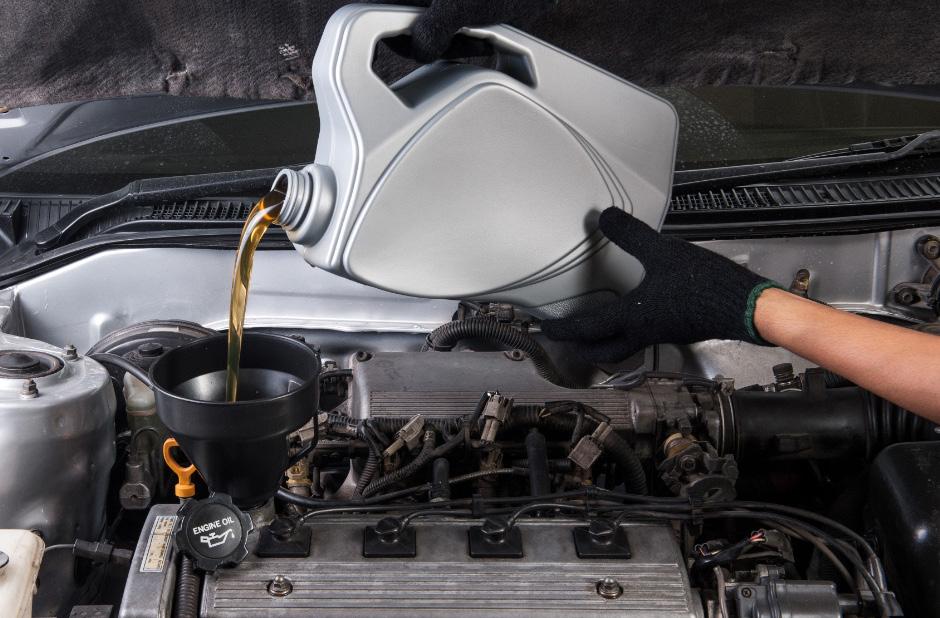
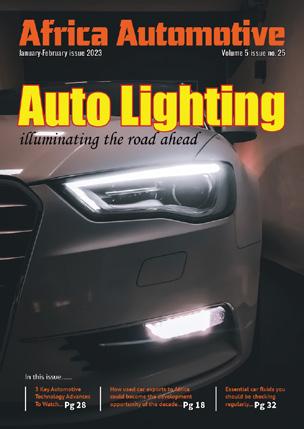
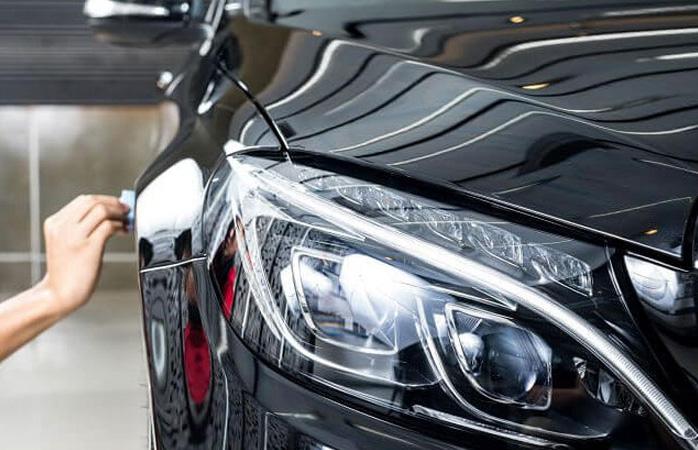
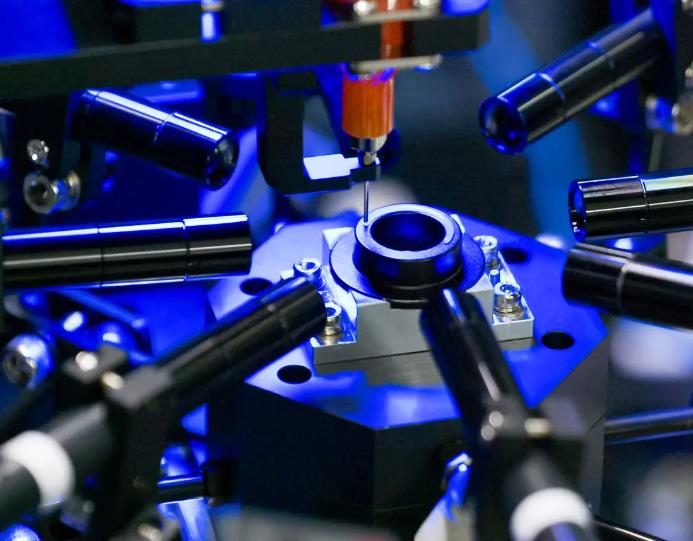
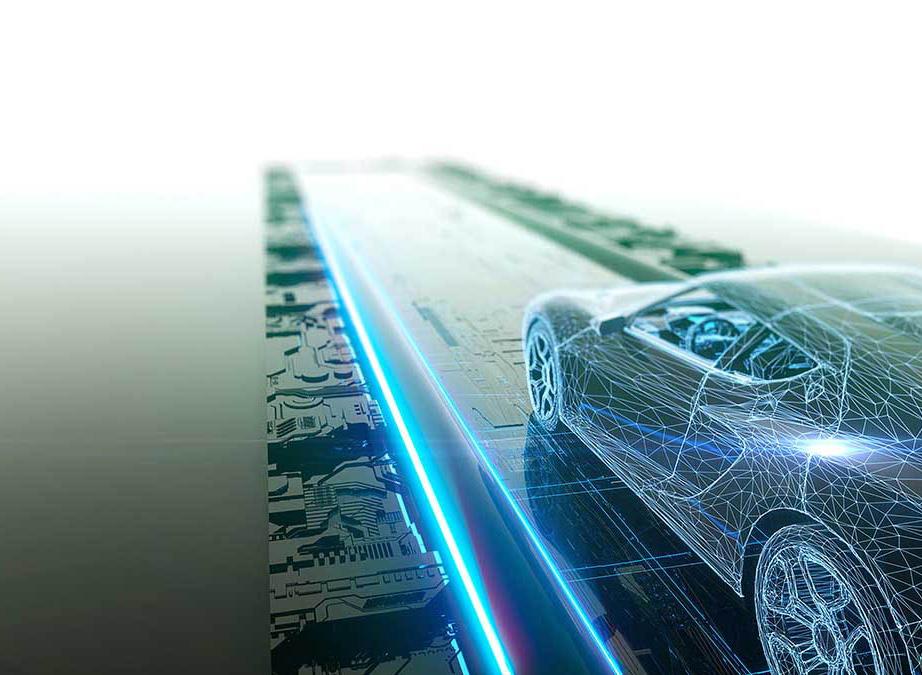
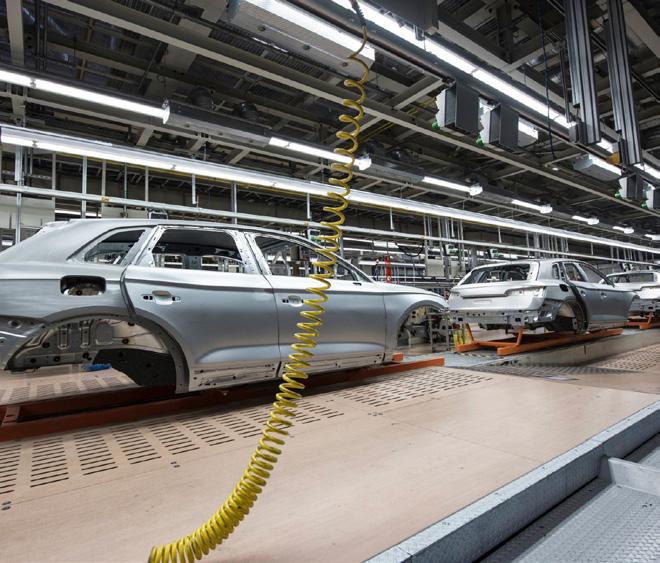

















Pesapal has launched a new Forecourt Management Solution (FMS), the first solution developed specifically for Africa that delivers integrated payments alongside monitoring and data tools. The new FMS, which is already operational in Uganda, Kenya and Tanzania, drives the automation of fuel and retail management processes and it also seamlessly connects distribution points and digital payments backed up with tools to reduce costs and pilfering, while improving the customer experience.
Pesapal Chief Executive Officer (CEO) Agosta Liko noted that independent petrol station operators and large forecourt networks are changing up their business models with convenience services, new fuels and battery charging.
“This makes it a more exciting, complex and risky game to be in. We are helping them automate and digitize so they can focus on growing their businesses,” he added.
Liko stated that with FMS, petrol station owners can remotely monitor and control LPG and fuel dispensers and that the solution automates how these talk to tank gauges, price displays and payment systems which, as usual with Pesapal, integrate mobile money, cards and online payments.
“We have spent months working with petrol station owners across East Africa and we have consistently heard about a lack of affordable monitoring and data tools for our unique environment. Many owners want to transform their forecourt into a multi-use hub, but they are
flying blind at the moment,” said Liko.
The CEO mentioned that Pesapal provides a back-end reporting tool and allows station owners to link Point of Sale (POS) and other technology platforms to forecourt operations with additional functions including centralized price changes, RFID-based attendant tagging, automatic indenting of products and posting of outlet data to head office systems.
Mombasa based tech company Ana Green Tech Africa has launched electric three-wheelers commonly referred to as Tuktuks which are expected to hit the market by March this year. The company, an affiliate of Green Tech Africa, an East African company that sells electric vehicles with the aim of promoting green energy and creating sustainable growth through employment and innovation.
The tuktuks Model Geni-80 are manufactured in China and were assembled at the Associated Vehicle Assemblers (AVA) in Miritini. The three wheelers carry three passengers and are fitted with a battery power of 4.38 kWh with a range per single charge of 100 kilometers.
Speaking during the event, Amina
Ibrahim, the company director said that they had a vision to build their own manufacturing plant in the next four years which will open job opportunities for many residents.
“Our entry into Mombasa is focused on making the county to be the hub of Ana Green Tech supporting all our other offices in Ethiopia, Djibouti, Rwanda, Uganda and other East African countries. This will also see us putting the city of Mombasa on
the Kenyan map of electric vehicles,” said Ibrahim.
The Geni-80 has a portable charge with it, and it can be charged at home on regular socket outlet like a mobile phone.
“It has no Engine, so avoids engine repair and overhaul and is also cost saving on spare parts because it has no periodic serviced parts like the air filter fuel filler, oil filter and doesn’t need oil and lubricants,” Ibrahim said.
The current market price for the tuktuks is Sh500,000 but she said that once here the actual price will range for between Sh550,000 to Sh600,000. So far the company has installed two charging points within the county, one around Agha Khan and the other at Sabaki Motors in Ganjoni.


The Arab Academy for Science, Technology & Maritime Transport (AASTMT) has announced that it would launch Egypt’s first locally manufactured electric vehicle (EV) within six months at an affordable price in the Egyptian market.
In statements to the state news agency MENA on the sidelines of the seventh Cairo International Exhibition for Innovation, the Dean of the Applied Research Department at AASTMT Mohamed El-Ghamry said that the EV will be available at the affordable price of EGP 95,000. Prime Minister Mostafa Madbouly is paying big attention to the Egyptian EV project, which is being financed by the AASTMT, El-Ghamry added. The project includes two EVs that are being designed in cooperation with the private sector, he said. The first EV had already been used
during the 27th UN Climate Change Conference (COP27), which was held in the Egyptian Red Sea resort city of Sharm El-Sheikh in November, El-Ghamry added. Work is underway to launch the second EV, which is designed to accommodate a family of five, he said. Local components make up more than 60 percent of the EV and its speed is 60 km/hr, Ghamry explained.
The first EV will operate on a Liion battery, whose estimated life is 12 years and comes with a 10-year
warranty, the AASTMT official said. It is an economy vehicle, said ElGhamry, adding that its operation cost does not exceed 30 percent of a diesel vehicle.

The body of the EV will be fully manufactured in Egypt and only some electronic parts will be imported at least for the time being, Ghamry said. Local components are expected to make up 100 percent of the EV within two years, he noted.
The AASTMT announcement comes less than a week after the announcement by Chinese automotive maker Geely and its agent in Egypt Abu Ghaly motors that it would launch two models of its first electronic EV in Egypt, the Geometry C. The first model, the GF 400 km, will be sold for $37,000 while the second model, the GF 550 km, will be sold for $39,000.
Kenyan's Associated Vehicle Assemblers (AVA), has announced that it will assemble 130 electric buses manufactured by Chinese automotive firm BYD in 2023.

Matt Lloyd, Managing Director of AVA, told Xinhua in the Kenyan capital of Nairobi that so far it has
assembled 15 BYD electric buses for the local market that were imported as a collection of parts.
“The advantage of BYD is that it is one of the world’s leaders in the manufacture of electric vehicles and the level of quality of the vehicles is very high,” Lloyd said on the sidelines of an electric vehicle forum.
Lloyd observed that locally assembled BYD buses have high safety standards and will therefore enhance Kenya’s overall road safety. He revealed that his firm has gained modern automotive technology through the technical advice it has received from BYD.
NIRA Dynamics, leading provider of sensor fusion software services for the automotive industry, is proud to announce the opening of its new garage that will focus on supporting electric vehicle manufacturers. The garage will help support a comprehensive suite of services that are tailored to meet the needs of electric vehicle manufacturers.
As the automotive industry continues to shift towards more environmentally friendly solutions, NIRA Dynamics recognizes the need to develop cutting-edge software services that can help accelerate this transition. The new garage will enable the company to provide unparalleled support to electric vehicle manufacturers and help drive
innovation in this rapidly evolving market.
“At NIRA Dynamics, we are committed to providing our customers with the latest technology and supporting their need to succeed in the fast-paced automotive industry,” said Lisa Åbom, CEO of NIRA Dynamics. “The new garage is an important step towards achieving this goal and we are proud to be making a positive impact on the future of transportation.”
The new garage will provide support to a range of software services that will help electric vehicle manufacturers improve safety, battery regeneration, battery management and sustainability. These services will be complemented by NIRA Dynamics’

existing suite of software solutions, including tire pressure monitoring, wheel safety services and advanced driver assistance systems improvements.

“The opening of our new garage is a testament to our commitment to innovation and supporting the transition to a more sustainable future.” said Lisa Åbom.
INEOS Automotive has named Coscharis Motors as its official retail partner in Nigeria. Nigeria is now the sixth market in SubSaharan Africa to join the INEOS Automotive brand, following South Africa, Kenya, Tanzania, Namibia and Botswana.
In 2017, INEOS Chairman Jim Ratcliffe, a car enthusiast and experienced adventurer, identified a gap in the market for a stripped back, utilitarian, hard-working 4×4 engineered for modern day compliance and reliability. INEOS Automotive Limited was formed and a senior team of automotive professionals assembled to bring the vision to reality with a fresh perspective of 4×4 development and manufacturing.
Combining rugged British spirit with German engineering rigour, the Grenadier will be a truly
uncompromising 4×4 built from the ground up. Engineered to overcome all conditions, it will provide best-inclass off-road capability, durability and reliability to those who depend on a vehicle as a working tool, wherever they are in the world.

“We are carefully selecting our partners across the SSA region, to find people who know their local market and customers, and also understand our brand,” said Tim Abbott, INEOS Automotive Head of Region South Africa and SubSaharan Africa. “Coscharis Motors shares our belief that the INEOS.
Grenadier is the perfect vehicle not only for Nigeria, but for the continent. Our shared passion for off-roading, along with their excellent reputation in the automotive industry, makes it the perfect partnership for Grenadier in Nigeria.”
Commenting on this partnership, the President/CEO of Coscharis Group, Dr. Cosmas Maduka said: “We are proud that INEOS Automotive has appointed Coscharis Motors to represent its brand in Nigeria. This milestone marks another step in the evolution of our company. With our history and experience of the Nigerian market, we know that the INEOS Grenadier is going to be a serious player in the off-road segment.
Bridgestone, a global leader in tyres and sustainable mobility solutions, has relocated its Europe, Middle East, India and Africa headquarters to a better connected, collaborative and sustainable office on the outskirts of Brussels. The new location is a short distance from Bridgestone’s prior office at the Corporate Village, covering three floors at Da Vincilaan 1, 1930 Zaventem, Belgium.
The Bridgestone EMIA headquarters is home to the organisation’s sales, retail, tyre solutions and support function teams who represent more than 36 nationalities. Bridgestone’s employees and visitors benefit from
close access to Brussels Airport and the Belgian motorway network, as well as a brand-new cycle highway and a myriad of public transport options. The building is located a short walk from Zaventem town centre and offers green spaces, electric vehicle chargers, on-site fitness facilities and various catering options.
The interior of the office space has been custom-designed to offer various options for flexible working, in line with the company’s smart working philosophy, while meeting spaces have been fitted with technology to enable seamless and engaging collaboration with hybrid teams from across the world.

Furniture has been selected with sustainability in mind by re-using existing furniture and choosing only local suppliers, while finishings used across the office space, including carpets and wall coverings, make use of recycled and sustainably sourced materials.

Banque marocaine pour le commerce et l’industrie (BMCI – Moroccan subsidiary of the French bank BNP Paribas), one of Morocco’s leading banks, has teamed up with KIFAL Auto (Autochek Group Maroc), an online marketplace that is transforming the experience of buying and selling used cars in The Middle East and North Africa, to enable easier access to financing for used car purchases in Morocco.
Established in 1964, BMCI has more than 300 branches and over 500,000 personal, business and institutional customers. With this partnership, Moroccans across the country will be able to more easily access the financing they need to purchase their desired used vehicles via the KIFAL Auto platform, and without needing to enter a physical bank branch.
KIFAL Auto is transforming the automotive experience in Morocco by providing a seamless process of accessing finance for vehicle purchases. Since the company was acquired by Autochek, it has adopted a new strategic approach, leveraging
its parent company’s expertise and experience to deliver game changing financing solutions for Morocco’s automotive sector. It is the first online marketplace in Morocco to offer an entirely digital experience for vehicle financing, with the ability to complete all steps online, from simulation to credit validation and document collection. Customers simply need to find the vehicle they want to purchase, submit an application for financing, and they can access the credit they need in 48 hours if the application is approved
and terms are met. Repayments can be spread over 12 to 84 months.
Various events from recent years –from a shortage of semiconductors to global supply chain disruption – have impacted the availability of new cars globally, leading to increased demand for used cars.
This increased demand has led to an increase in used car prices – with prices rising up to 36 percent higher in some cases.

Isuzu East Africa has launched a new after-sales facility in Nairobi, to improve customer service. The Sh35 million million facility will enable customers to get faster services and access 10,000 different vehicle parts.

“Aftersales for Isuzu Motors has always been a key pillar of our business. We are now able to offer comprehensive aftersales solutions that boast modern vehicle service and diagnostic technology to ensure customers receive accurate vehicle health checks,” said Isuzu Motors Limited Executive Officer Naohiko Yanagawa.
“This investment will reduce waiting time for customers. It will also allow Isuzu East Africa to handle peak demand periods seamlessly,” she added.
Yanagawa added that the facility will also have a wide spectrum of
proprietary diagnostic equipment to troubleshoot or tune the latest range of Isuzu vehicles that feature powerful and efficient common rail engines.
According to Rita Kavashe, the Isuzu EA’s Managing Director, the facility will be able to offer additional support to its dealer market, and it
will definitely grow our customer base by improving aftersales operations.

“This investment underscores our commitment in ensuring that we continue being the leading automotive assembler in Aftersales services for our bus and truck customers,” she said.

Google has announced an HD version of its vehicle mapping solution. Unlike Google Maps, Google’s HD map is not a consuming-facing application but an additional layer of data that’s served to the vehicle’s L2+ or L3 assisted-driving systems through Google Automotive Services.
The additional information sits on top of Google Maps’ data and delivers details such as precise lane makers and localization of objects (road signs) to help assisted-driving vehicles orient themselves on the road. The driver will not be able to see or access the HD map or data directly. It’s not clear at this time if the driver will even know if the vehicle is using the HD mapping, though,
presumably the vehicle’s assisteddriving skills will be improved when it’s in use.
Also read: Google opens Android Automotive OS to Spotify, other media app developers According to a Google spokesperson, the HD mapping is initially focused on hightraffic roads like freeways, but the spokesperson stopped short of saying exactly which cities or freeways. They said Google is working with automakers to determine where the HD map is most helpful.
The HD map is now available to automakers using Google Automotive Services. Volvo and Polestar announced that the HD map will soon be available in the Volvo EX90 and the Polestar 3.

There is potential for trade enhancement with Egypt as India has competencies that Egypt wants, for example in information technology, cyber security, industrial goods, car manufacturing, automobile parts,
and light engineering goods said, Former Deputy National security Adviser Pankaj Saran.
Saran who currently serves as Convenor of NatStrat, Centre for Research on Strategic and Security Issues said that this depends on how fast the Egyptian economy grows.
“Egypt is very keen to import wheat from India. There are a lot of Indian investments in Egypt. We can use Egypt as a gateway to the rest of the region including to northern Africa, Europe, and the Arab world,” he advised on his fortnightly show on Awaz-the Voice.
He was speaking on the renewed efforts to bring the two countries together with the ongoing visit of Egyptian President Abdel Fattah-ElSisi to India. Saran, who has known Egypt from the time he was posted there for three years as a young diplomat, says that Egyptians and Indians are like-humoured.
He said the relations between the two countries were not so warm for a long time because of internal instability in Egypt. He said that President Mubarak, who ruled the country for 30 years, was “focused on fighting terrorism, fundamentalism, and extremism”.
So, they did not have time for India or the rest of Asia. They had an extremely close relationship with the United States, Europe, and in particular France.
Nine years after the creation of the automotive aftermarket company, NEXUS Automotive International will further focus on Africa through IAMAGA, a dedicated entity. The aim is to accelerate growth on the continent and continue deploying N! innovative and sustainable initiatives.

N! will further develop the activities of IAMAGA, a regional entity dedicated to the African Automotive Aftermarket, which includes 34 Africa based members and their affiliates.
IAMAGA will be providing specific services to its community such as:
• Transactional activities, for optimized access and pricing.
• Strategic Partnerships with OEMS, with specific commercial

collaborations.
• Financing and coordination of innovative projects.
• Assistance with sustainability related initiatives.
• Data sharing.
• N! Academy Training deployment (garages/distributors).
• Garages network services structuration.
• Mobility in Africa through innovation screening.
• African members representativity (central service center, credit risk scoring)
• Sustainability: Re-man / Re-use / Recycle » activities structuration.
• Replicate the newly created Algerian Academy in other markets.
IAMAGA will also reunite its community through the organization of a dedicated mid-year event, which will take place in Morocco.
“Africa has always been strategic since the launch of NEXUS – it’s part of the DNA. After 9 years, we have developed an impressive network that is looking forward to providing more quality parts, more services, innovation, and of course, a sustainable future!” said Gael Escribe, CEO of NEXUS Automotive International.
The African Export-Import Bank (Afreximbank), in collaboration with the African Union and the AfCFTA Secretariat, brings you the 3rd Intra-African Trade Fair (IATF2023), to be hosted by the Government of the Republic of Côte d'Ivoire in Abidjan .


The fair will provide a unique and valuable platform for businesses to access an integrated African market of over 1.3 billion people with a GDP of over US$3.5 trillion created under the African Continental Free Trade Area.
The LATIN TYRE & AUTO PARTS EXPO are the most important tire and auto part shows in Latin America and the place to be if you want to grow your business in Latin America and the Caribbean!

The upcoming edition will be in the all-new Panama Convention Center in Panama which features 59,000 m2 of
space. 450+ international exhibitors will be present, from tire manufacturers, tire service and repair companies, retreading, wheels, auto part manufacturers, auto service, tools and equipment, etc. Educational and training sessions with top industry leaders, networking events, and much more are included with your registration.

Leading tech mobility startup Nairaxi, has coasted to victory after emerging Winner out of the selected startups that participated in the 3rd Annual NCC ICT Innovation Competition and Exhibition in Nigeria.
Nairaxi had clinched the cash prize of 2million naira after demonstrating excellence in its capacity to bridge the digital divide by adopting innovative and creative tech solutions to drive economic development in Nigeria.
The competition was organised by the Research and Development Department of the Nigerian Communications Commission (NCC). It was held at NCC Digital Bridge Institute, Oshodi, Lagos State.
Described as quite competitive, the 3rd Annual NCC ICT Innovation Competition themed “Utilizing Indigenous Digital Solutions to Bridge the Digital Divide” kicked off with over 1000 Startup applications. 400Startup applications was shortlisted, 88 Startups made it to the first cut, 58tech hubs made it to the second cut, but only 15 tech companies made it to the exhibition booths for the semi final.
Speaking, Kingsley Eze, CEO of Nairaxi, described their victory as a reinforcement towards new technology innovation solutions for Nigeria. He stated that Nairaxi will not relent in the areas of Introducing, ensuring and building new bridges in the nation’s digital divide.
Also speaking, the Co-founder, Elizabeth Omale, appreciated NCC for encouraging and rewarding ICT startups in Nigeria. She explained that Nairaxi will be committed to innovative digital solutions across key sectors so as to improve social growth and economic advancement.
According to him, “Nairaxi has received commendations and congratulatory gestures from across the world for emerging Winner at one of the biggest ICT, digital competitions organised by the Nigeria Communications Commision (NCC). The tech powered startup has collaborated with government agencies and institutions to champion digital inclusion across critical sectors in Nigeria.”
“In recent times, Nairaxi has remained on the frontline for new digital solutions, targeted at achieving the nation’s digital agenda. The company has introduced several tech-related innovations which is currently providing access to digital technologies, promoting entrepreneurship, and creating new Jobs.
He revealed that Nairaxi had in 2022 unveiled the Digital Transit Subsidy Program and the Automated Fare Collection System which provides a seamless and contactless transport service via its mobile application. The tech solution initiatives will mitigate the projected crisis that emanates the final fuel subsidy removal.

Toyota has announced the launch of the 2023 FJ Cruiser in the Middle East, together with a special ‘Final Edition’ grade to mark the iconic vehicle’s last year of production. With just 1,000 units available, the Final Edition comes with several unique features and gives off-road adventurers a unique opportunity to own a piece of motoring history. The FJ Cruiser is set to be discontinued in December 2022, after more than 15 years as one of the region’s most popular SUVs.
Inspired by almost half a century of tough off-road performance from the legendary FJ40 4×4 utility vehicle, the FJ Cruiser was developed as a capable SUV aimed specifically at drivers looking to push the limits. Launched in 2007, the model was hailed as an instant classic by customers and critics alike, particularly in the Middle East where it has gained an enthusiastic following among off-roaders.
The 2023 Final Edition adopts a single-tone select beige color for the exterior, upholstery, and center cluster trim, creating a distinctive sense of modernity. Further adding to the vehicle’s rugged appeal, a special black coating has been applied extensively throughout the exterior, including the blacked-out grill, bumpers, exterior mirrors, door handles, and spare tire cover. 17-inch aluminum wheels and side steps are also included, while a Final Edition badge indicating the vehicle’s unique number underlines the limited edition’s exclusivity.
Vincent Wijnen, Senior Managing Director, Al-Futtaim Automotive, said: “After 15 years as one of the region’s best-loved SUVs, the time has come to bid a fond farewell to the Toyota FJ Cruiser, a model that has now become as iconic as its predecessors. Tough, rugged and capable, the FJ Cruiser is a firm favorite amongst the
UAE’s off-road enthusiasts. Although these will be the last FJ Cruisers produced, we will continue to see them on the roads, deserts and mountains of the Emirates for many years to come, thanks to Toyota’s legendary reliability. We are excited to pay tribute to this legendary SUV with the Toyota FJ Cruiser Final Edition.”

Kei Fujita, Chief Representative, Middle East and Central Asia Representative Office, Toyota Motor Corporation, commented: “The FJ Cruiser rides into the sunset leaving lasting memories of one of the most iconic SUVs in Toyota’s rich history. The vehicle’s winning combination of off-road capabilities, style, and performance make it equally at home during desert adventures or everyday activities and provides a comfortable and dependable experience for drivers and passengers, wherever their journeys may lead.”
Fujita added: “Although the model will be discontinued, the excitement of off-road capabilities lives on with other adventure-ready Toyota vehicles such as the iconic Land Cruiser, GR Sport Variant, and Prado. I would

Inspired by almost half a century of tough offroad performance from the legendary FJ40 4×4 utility vehicle, the FJ Cruiser was developed as a capable SUV aimed specifically at drivers looking to push the limits.Toyota FJ Heritage. Toyota unveils 2023 FJ Cruiser ‘Final Edition’
like to thank our customers for continuing to inspire us to develop ever-better cars tailored to the needs of motorists in the region and beyond.”

Powered by a DOHC, 4.0-liter V6 engine that incorporates dual independent Variable Valve Timing with intelligence, the 2023 FJ Cruiser is capable of producing 270 horsepower and 380 N m of peak torque. It is also equipped with a wide range of driver assistant features such as Active Traction Control (A-TRAC), Crawl Control, Vehicle Stability Control (VSC) with an off switch, and electronically controlled locking rear differential. In addition to stellar all-terrain performance, drivers enjoy

greater peace of mind thanks to Toyota’s world-class safety features.
The FJ Cruiser’s legendary status as one of the most unique Toyota SUVs and proven durability throughout the years will live on in the hearts of its owners and the Toyota family. Although production will cease, owners can be assured they will continue to enjoy world-class service from their local Toyota Service Centers. The 2023 FJ Cruiser is available in a variety of attractive finishes and specifications, while the Final Edition is scheduled to roll into the region during Q4 2022.
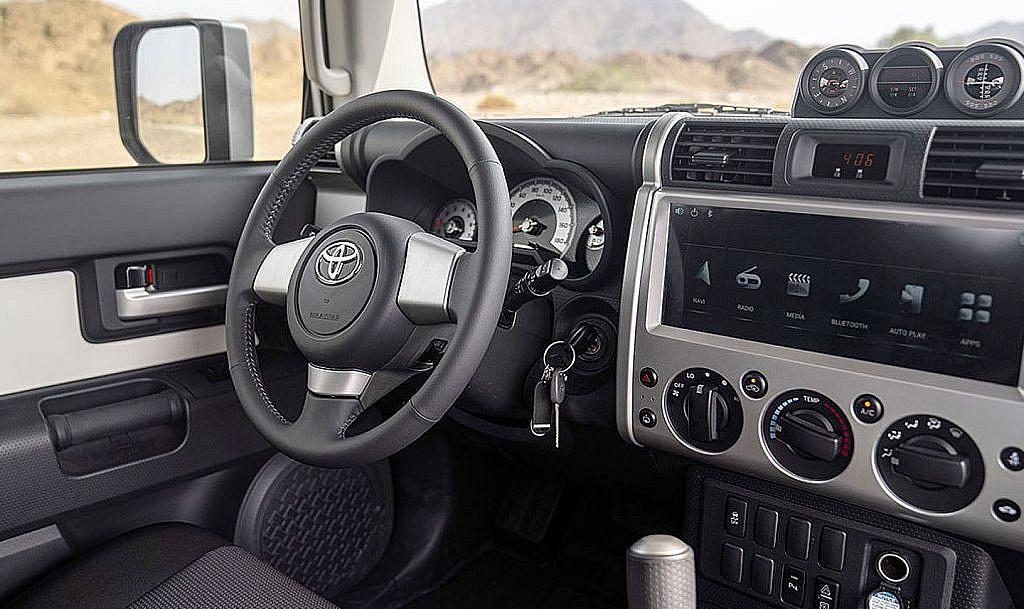

Nissan has launched the All-New 2023 Nissan X-Trail in the Middle East as a Premium Urban Crossover. The 2023 Nissan X-Trail furthers the brand’s commitment to introduce innovative mobility solutions, and offers customers class-leading versatility, elevated exterior and interior designs, advanced safety, and improved levels of capability.
Held at King Abdullah Economic City (KAEC) in Saudi Arabia, the two-day launch event began with an official unveiling of the all-new X-Trail hosted by Thierry Sabbagh, President of Nissan and INFINITI in the Middle East, alongside Adib Takieddine, Managing Director of Nissan Saudi Arabia. Attendees then embarked on an adventure-filled journey and made pitstops along a thrilling route to discover more about the All-New 2023 Nissan X-Trail.
Reflecting the Nissan SUV’s role to Defy Ordinary, the key themes echoed across the event were

eXpand, eXpress, eXplore, and eXhale, pushing guests to eXist beyond the everyday. A segmentleader on several fronts, the all-new model features the latest Nissan Intelligent Mobility technologies, including ProPILOT Assist for the very first time on the X-Trail line-up, and offers heightened connectivity with up to a collective 35.4-inches of cabin screens.
Sabbagh said: “For over twenty years, the X-Trail has been an integral part of our SUV line-up in the region and has continually catered to the needs of families and adventure enthusiasts across the Middle
East. Brought about by a deep understanding of our customers, the All-New 2023 Nissan X-Trail, which is one of our most technologically advanced SUVs to date, addresses customer desires in the rapidly growing mid-size SUV segment and is in line with our global Nissan NEXT transformation plan.”
Marking the brand’s first regional launch to take place in the Kingdom, the event served as a testament of Nissan’s commitment to Saudi Arabia and the wider Middle East, a key region of opportunity for Nissan since 1956.
Making its debut in the 2023 Nissan X-Trail is an Intelligent 4×4 system with direct coupling that reacts faster than ever before, allowing for the seamless transfer of power between axles for ultimate stability and traction.Nissan X-Trail 2023
Takieddine commented: “Saudi Arabia’s automotive industry is set on an exciting trajectory, with further development planned under the Vision 2030 program, and we are here today as a partner to contribute to the kingdom’s ongoing transformative shift in the automotive sector. Today’s regional launch of the All-New 2023 Nissan X-Trail marks a major milestone for us at Nissan, as we solidify our commitment to the region and continue to deliver innovation that excites”.
The latest addition to Nissan’s impressive SUV lineup, the All-New 2023 Nissan X-Trail features a striking exterior design, with distinctive Nissan elements including a signature V-motion grille and floating roof design. Accentuating the X-Trail’s appeal to families are its bigger-opening rear door apertures, that open up to 85 degrees for easier rear access and egress. The interior receive a premium upgrade, underlined by Nappa leather-accented seating with 3D diamond quilting available on the top-of-the-range SL grade.
The 2023 Nissan X-Trail is powered by an all-new 2.5-litre four-cylinder petrol engine that, compared to its predecessor, raises power output by 12hp to 181hp, and boosts torque by 11Nm to 244Nm, for more effortless acceleration and confident overtaking. Power is pushed through an advanced Continuously Variable Transmission (CVT) with paddle-shift controls on the steering wheel for manual over-ride of the new shift-bywire transmission interface.

Making its debut in the 2023 Nissan X-Trail is an Intelligent 4×4 system with direct coupling that reacts faster than ever before, allowing for the seamless power between axles for ultimate stability and traction. A twist-dial Drive Mode Selector provides five driving modes to choose from: Off-Road, Snow, Auto, Eco and Sports, with the added benefit of Hill Descent Control for carefully modulated downhill off-road driving.
Nissan Intelligent Mobility suite of active safety features is provided with greater capability, making it the safest X-Trail ever, with Nissan Safety Shield 360 that includes Automatic Emergency Braking with Pedestrian Detection, Blind Spot Warning, Rear Cross Traffic Alert, Lane Departure Warning and High Beam Assist. Supporting this is the first-ever introduction of Nissan’s semi-autonomous ProPILOT Assist on X-Trail, which can accelerate, brake, and cruise at a set speed within a single lane.

Offering customers the choice to select the grade that best suits their lifestyle, the all-new model is available in four grades, with 2WD or 4WD options. This is in addition to 15 different color combinations including five dual-tone options and 5-seater or 7-seater configurations.
The Nissan X-Trail 2023, which is the fourth SUV model to sport the brand’s latest design language and insignia, following the Patrol, Pathfinder, and KICKS, is available for booking at Nissan’s partner network across Saudi Arabia and the wider Middle East region.



The Nigerian government has attracted investments of about one billion dollars in the automotive sector, created the capacity to produce 400,000 units of vehicles and commenced initiative to support widespread adoption of electric vehicles.


The Minister of Industry, Trade and Investment, Mr Adeniyi Adebayo during the presentation of the Ministry’s score card for the year 2015-2023 said when the draft automotive Bill is passed into law, the full potential of this sector will be realised.
Meanwhile, the Minister said to boost small scale agriculture, the ministry also established six agro processing facilities across the country.
According to him, “We all know that we need to grow our non-oil export volume to diversify our export earnings and create jobs, the key requirements in making this happen
is to ensure that the products meet global standard and that is why we have developed the Nigerian National Policy which will ensure worldwide acceptance of Nigerian product.”
“We have commenced implementation through the establishment of a national policy council, we also successfully attracted Afreximbank to construct the first of a kind Afghan quality
centre in Ogun state, it was commissioned in December 2022 and geared towards delivering world class quality infrastructure.”
Mr Adebayo explained that the ministry implemented the 50 billion naira Export Expansion Facility Programme, EEFP to radically expand the country’s export capacity.
“The programme has trained thousands of farmers on good agricultural practices for export and about a thousand SMEs on market access, For me, particularly gratifying is the training of about 2000 Women on export readiness and training of youth on export of digital services,” Mr Adebayo said.
“I am pleased to announce that we have started seeing the impact of a 50 billion naira Export Expansion Fund programme, in quarter four of 2022 alone, Nigeria with the export of $1.4 billion culminated in a record increase in the value of non oil exports by 40% to 4.8 billion dollars as at the year 2022.”

Mikano International’s Motors Division, the fastest growing automotive company in Nigeria is expanding its brand portfolio once more, following the recent debut of the Maxus brand.

The General Manager, Mikano Motors, Mr Ralph Haidar stated that “this latest addition will complete and complement our product lineup, joining our Geely, ZNA and Maxus brands.”
Proceedings are fully underway for the launch of this yet- to – be named brand, though auto enthusiasts have made several educated guesses on the mystery brand,
which will be proven or disproven when an official announcement is made. In true Mikano style, the new automotive brand is being introduced in grand style.
A social media challenge where participants stand the chance to win a brand- new 2023 luxury SUV is currently ongoing, and all that’s required to win is a descriptive and creative expression of their dream car. Other indications hint that the new auto brand will be arriving with a wide array of models going by the subtle hints on promotional material released from Mikano Motors. While we wait with bated breath, we can tell that Mikano Motors is going to storm the market as they did with the Geely brand in the past couple of years.
In areas where government budgets for public transport infrastructure and operations are limited, the ability to move people and goods depends on the availability of affordable vehicles. Motorized transport is thus a lifeline, providing access to health services, to education and work, and to new opportunities.
While individual mobility is mostly covered with twoand three wheelers in large parts of low- and mediumincome countries (LMICs), cars and vans, especially as taxis and other communal modes of transport, help offer mobility – and with it, social mobility.
High-quality used cars imported into LMICs could be (and already are) therefore an opportunity for such countries. However, the costs are becoming ever more visible: carbon emissions and air pollutants are on the increase, respiratory health conditions are on the rise, roads are unsafe.
While many developed markets are aligned on decarbonization of cars in the next 10-15 years, a truly just net zero transition requires accountability for the outdated carpool that LMICs are left with. And without

decarbonization of road transport everywhere, such a transition is impossible.
“Getting more and more electric vehicles on the roads is critical to get to reach net-zero transport emissions quickly. This transition must happen around the globe," says Dr Young Tae Kim, Secretary-General of the International Transport Forum (ITF).
"Less-developed regions must not become dumping grounds for unwanted, polluting used vehicles. Preparing emerging economies to go electric will require international collaboration. ITF research on used car exports will help guide policy-makers to address the issue."
Not least, if no proper system is in place to recollect and recycle vehicles at their ultimate end of life, valuable resources are lost and severe pollution issues arise –most notably the terrible burden on up to 800 million children through lead poisoning, caused especially from ill-managed car lead acid batteries.
Whose responsibility is it? It is ours, collectively. "European nations have to stop exporting pollution
used
exports to Africa could become the development opportunity of the decade
Used cars are often exported to lower income countries after 10-15 years in developed markets, meaning their emission levels tend to be higher.
to the Global South. A lot of responsibility lies with European and national governments that must close the – often – illegal export of old cars that are no longer fit for EU roads,” says Julia Poliscanova,
Senior Directorat Transport & Environment.
“European end-of-life of vehicles (ELV) rules are about to be reformed in 2023, which offers a key opportunity to tackle this. Digital tools are needed to trace car movements across and beyond Europe, and stricter penalties for illegal import of polluted vehicles.”
Here we summarise why and how we can drive equity on roads in both the Global North and the Global South, together.
Africa is the ultimate destination for some 40% of used lightduty vehicles. Central Asia receives another sizable chunk. Half of these cars do not meet the fuel economy, exhaust emissions, and safety standards imposed by their original home countries today.

Kept in use, they become a major source of particulate matter and nitrogen oxides. These pollutants exacerbate because fuel quality poured into these old engines is unregulated and, hence, poor. Conversely, poor fuels pose a challenge for more modern vehicles, so both issues need addressing simultaneously. The result is deadly for the many families practically living alongside roadways, as alerted by the World Health Organization.
“Through emissions standards, emissions from cars, trucks, buses, locomotives, and other mobile sources – as well as gasoline and diesel fuel – can be reduced up to 99%. These regulations are not only critical to protect public health and environment for combating climate change, and instrumental in preventing over 40,000 premature deaths and hundreds of thousands of respiratory illnesses each year in the US alone,” says Margo Oge, who served at the US Environmental Protection Agency for 32 years, directing the Office of Transportation Air Quality for the majority of her career.
In developed countries, policies are set not only to regulate the quality of vehicles produced and sold, but also to encourage consumers to demand more efficient cars and drive less. That interplay of supply and demand efforts will not be as useful, nor fair, in emerging markets.
Many families rely on mobility offered with used vehicles due to their low price point, or as alternatives are often not on offer at all. Import dependency on exporting markets thus persists.
The export of used cars increases every year. In 2015, 3.4 million used cars were exported globally, by 2019 this had increased to nearly 5 million.
The largest exporters are the US, Europe, Japan and South Korea, where approval for vehicle manufacturing and road-use
Dr Ben Dror has over a decade and a half of global work experience in public, private and third sector settings focused on clean-tech and sustainable transportation. At the World Economic Forum, Maya leads Sustainable Automotive and Mobility work, including the Global New Mobility Coalition, the scaling automotive fleet and infrastructure finance, the Circular Cars Initiative, electrifying India and emerging Markets, and sustainable last mile ecosystem.
Sustainability professional with 10+ years experience dedicated to fast-track the transformative change urgently needed to sustain civilization, in business, politics and society. Focus on decarbonization and circular economy strategies, with a focus on sustainable mobility, energy, and food systems.


regulations are most progressive.
For example, about a decade ago, vehicles in Europe were required to consume a little over 5 litres of petrol per 100 km driven, or 130g CO2 per km.
The average fuel consumption in second-hand car market-dominated developing countries is almost 1.5 times that amount today.
Permissible pollutant emissions equally dropped sharply for newly sold vehicles. In other words, LMICs are two decades behind developed markets in terms of vehicle tailpipe emissions levels, with cars here emitting on average three times more pollutants.

Electric vehicles are projected to make up 70% and 50% of new car sales in Europe and the US by the turn of the decade. This transition will help address half of transport emissions in developed markets and is essential. Yet, without informed action, it will translate to intensification of the vehicle emissions gap between the Global North and South.
Not only will battery electric cars require charging infrastructure to enter the market – a challenge which even the richest nations struggle with so far – but they’ll also face ageing and end-of-life battery vehicles for which they are so far ill-equipped. The necessary circular governance and infrastructure need to be put in place quickly.
In 2020, the United Nations Environment Programme (UNEP) issued its first ever global overview report of the trade in used vehicles.
“Countries have to stop exporting vehicles that are no longer roadworthy and fail environment and safety inspections, while importing countries must adopt upto-date regulations,” says Rob de Jong, the report author and Head of Sustainable Mobility at UNEP. “On the other
hand, why have the importing countries been waiting so long to put in place some minimum harmonized standards?”
Following a thorough review of the regulatory environment in 146 developing and transitional countries, UNEP found that two-thirds have weak car import regulations. For example, the average imported used car age in Uganda was 20 years.
A positive signal is that, in early 2020, 15 West African countries signed an agreement to introduce an array of regulatory tools to improve air quality and mitigate emissions. Equally, most exporting countries lack sufficient export regulations that mitigate illicit dumping of vehicles that should rather be labelled waste and scrapped.
Supported by the Economic Community of West African States Commission, UNEP and other partners, the countries committed to introduce a sulphur fuel standard of 50 parts per million (ppm) for petrol and diesel for all imported fuels, as opposed to 10,000 ppm diesel fuels permitted in some cases previously.
They also committed to comply with vehicle emissions standards that Europe introduced in 2006 (EURO 4/IV): 4.2 litres per 100 kilometres by 2030 instead of current fuel economy standard of 7-9 litres per 100 km, and a five-year age limit for used vehicles.
This shows that with the right rules in place, LMICs can leapfrog the use of old, unsafe vehicles and progress to far cleaner and even electric vehicles, as well as better transport systems altogether.
“Emerging market vehicle demand is increasing, and so are consumer expectations for high quality mobility and services. It is therefore critical for exporting companies to collaborate more closely with importers to ensure supply meets demand. We are excited to exchange with core automotive players during the Annual Meeting in Davos, for addressing this challenge,” says Omar Al Futtaim, CEO of Al Futtaim Group.
As the spotlight shifts to the Global South, so does the momentum for action by international organizations aiming to fulfil the United Nations’ Sustainable Development Goals (SDGs).
For example, the German Association for International Cooperation (GIZ), funded by the German government and working with corporates, has been supporting the
Air quality degradation is driven by old cars in Africa, home to 40% of global used vehicles, and 80% of these do not meet basic emissions standards.
hunt for the reasons behind the ‘lost vehicles’.
“International development institutions and partners must support developing countries in their efforts to regulate imports of used vehicles and establish and enforce vehicle safety and emissions standards,” says Binyam Reja, Transport Global Practice Manager at the World Bank.
“While exporting countries should collectively regulate their vehicle exports, we cannot simply expect developing nations to halt vehicle growth, which is essential to meeting their mobility needs for development. Motorization management is therefore an essential component of a sustainable mobility programme in developing countries.”

In sum, global trade of used vehicles is a boon: through it, vehicles remain in use for longer, making good use of the resources that were used to build them and they can also offer affordable mobility to those with smaller pockets.
But the downsides are increasing fast: the ageing fleets put people at risk and will need to be decarbonized fast in emerging markets as well.
”The Zero Emission Vehicle Transition Council (ZEVTC) brings together ministers from governments that represent over 50% of the global car market and one quarter of the global truck and bus market," says Drew Kodjak, CEO of International Council on Clean Transportation.
"Council members have agreed to collectively address key challenges in the transition to ZEVs [zero emission vehicles], enabling the transition to be faster, cheaper, and easier for all. We are glad to support stakeholder collaboration for exploring measures to develop secondhand markets for ZEVs," he adds.
Existing multinational frameworks have been slow to respond due to the complex situation – innovative multi-stakeholder collaborations could step in and step up to accelerate action to ensure that global trade of used vehicles happens in a more responsible fashion, to contribute to well-being of people, decarbonization and circularity everywhere.

As we transition to electric vehicles, publicprivate collaboration is key to ensure this happens equitably in both the Global North and Global South.

Automotive lighting refers to the various light functions on a vehicle's exterior and consists of lighting and signaling devices mounted to or integrated into a motor vehicle. These devices illuminate the road ahead for the driver and increase visibility, allowing other drivers and pedestrians to see the car's presence, size, position, direction of travel, and its driver's intentions.
The different types of lights used in automobiles range from traditional headlamps to modern LED and laser technology. Traditionally, the headlights of cars were a pair of one-filament bulbs that were located in between a polished reflector and glass lens, creating a halo around the light beam. The problem with these was that the reflector quickly rusted, making it less efficient and creating glare on drivers who were trying to see them.
The first modern headlamps were developed in 1919 by Bosch to
solve the aforementioned problem. These two-filament bulbs were able to operate with dip switches located on the dashboard and operated both low and high beams. Today's modern automotive headlamps use LED lighting to produce a powerful, focused beam of light that illuminates the road without blinding other motorists. Some modern headlamps also have adaptive features like a "high beam" mode to help the driver see oncoming traffic.
Many automotive lighting manufacturers are now producing LEDs for a variety of applications. They are brighter than most other light sources and don't suffer from temperature changes, so they stay bright even in extreme weather conditions. They are much more energy-efficient and longer-lasting than other light sources, which means lower maintenance costs and a higher level of safety for the driver.
Another modern lighting trend is the emergence of OLEDs, or organic light-emitting diodes. They are more adaptable than other lighting options and can be produced into narrow, bendable sheets that work perfectly for dashboard screens or signal lights in the car interior. Other common lights on the exterior of a vehicle include turn signals, side markers and taillights. While these functions have not changed much over the years, they do offer more flexibility in their design.



The headlamps of a vehicle are a major component of the overall
automotive lighting system. These lights provide illumination for drivers to see the road and other vehicles, and also improve visibility for pedestrians and cyclists by reflecting off the tarmac.
High-intensity discharge (HID) lamps use a filament-less light source with an arc that emits light in an atmosphere of xenon gas to reduce the time it takes to warm up, making them ideal for automotive headlamps. However, they do require a large starting voltage to ignite the arc and are only suitable for highbeam applications.
The most recent innovation in automotive lighting is the light-emitting diode (LED). These semiconductors, which are solid-state electronics with no components that wear out, produce light when current flows through them. They are becoming increasingly popular for automotive lighting systems due to their energy efficiency, luminous efficacy and ease of intensity control through current modulation or pulse width modulation.
Some high-end vehicles are being equipped with adaptive headlamps that automatically adjust the beam of each headlight to the conditions and topography of a given road. These systems are particularly useful for blind-spot detection and reducing accidents by focusing on the areas in front of the vehicle that need extra illumination.
Some countries permit or require a vehicle to be equipped with daytime running lights, which can illuminate the roadway for drivers. They may be functionally dedicated lights or a combination of low and high beam
headlamps, front turn signals, and front fog lights.
Emergency vehicles usually have distinctive lighting equipment to warn other drivers of their presence and indicate the priority of movement in traffic. These can include bright warning lights that flash in sequence or a rotating bar of light that changes color as the vehicle moves forward, and sometimes also a directional beam of white light on the exterior.
In addition, many new vehicles have a variety of other exterior lighting features such as a rear-vision camera that helps the driver to safely reverse a vehicle out of a driveway, a pair of red warning lines projected onto the road when the car is reversing and other visual cues that indicate the vehicle's status or intention on the road.
In order to communicate more clearly with other drivers, the driver needs to be able to see and understand what is going on around them, and this can be done by using transparent headup displays or integrated camera systems. These new technologies can display information such as a vehicle's battery level, its position in the queue for an exit ramp or even whether it is in autonomous-driving mode.
Aside from the above mentioned lighting, there are other lighting applications that are gaining more popularity on the auto scene, including license plate lights. Some countries have strict enforcement rules against failing to have working license plate illuminators, so these small bulbs are becoming more and more important for the safety of drivers and other road users.



Automotive Paint Films are a transparent, urethane sheet that protects your car’s painted surface from a variety of damages. They also help preserve your vehicle’s paint by reducing chipping and scratching. They are commonly used to protect decorative graphics, fleet markings, and other surfaces from wear and tear.
The most popular type of paint protection film is urethane, a clear, lightweight polymer with incredible elasticity. It was developed during the Vietnam War, when the United States military was struggling to repair rotor blades on its helicopters that were damaged by tree branches and debris. The military partnered with 3M to create a durable, but lightweight urethane film that could replace the entire rotor blade for a fraction of the cost.
Unlike plastic, a urethane film is resistant to corrosion and acidic contaminants such as bird droppings, bug splatter, or mineral deposits and acid rain. It does not oxidize and does not fade, which means it is an excellent choice for your car or truck's paint. It is also a good option for those who do not want to
spend money on ceramic coatings or traditional carnauba waxes. Typically, urethane films are more effective than ceramic coatings in keeping your vehicle's paint from fading and maintaining its glossy appearance for longer. They can be applied to any surface that will benefit from protection from rock chips, scratches, or dings. For example, they can be installed on the front bumper cover, hood, grille, side-view mirror covers, and door edges.

PPF is a thermoplastic urethane that goes over any painted surface on your vehicle’s exterior. This type of film is a great option for people who want to protect their car
from the elements, but aren’t quite ready to invest in a new paint job or paintless dent repair.
The first branded term in the automotive paint film industry is “Clear Bra.” You may have seen those thick, clear “bras” that car dealerships applied to hoods to protect them from rocks, gravel, road salt and other debris. The clear bra was a popular choice for the '90s and '00s.


The top layer of a quality Clear Bra is made up of elastomeric polymers that can return to their natural shape after they are stretched or disfigured, providing the film with its “selfhealing” property. This enables the film to absorb light scratches and keep them from causing swirl marks when the film is removed from the surface.
In addition to its self-healing properties, a quality film will also resist chemical exposure, making it perfect for car enthusiasts who spend a lot of time on the water. It is also UV resistant, guarding your paint from fading and discoloration caused by the sun’s UV rays.
The adhesive that binds the film to your car is another critical factor in its long-lasting performance. The old adhesives that were used on many older films would dry out and turn yellow over time, which could have a negative impact on your vehicle’s paint. Modern PPF manufacturers use adhesives that are UV resistant, ensuring that your car’s paint will
not get oxidized. Moreover, most new PPFs come with warranties of 10 years against yellowing, bubbling or cracking.
A high quality paint protection film contains a top layer that is comprised of an elastomeric polymer substance. The polymer substance will return to its original shape after being stretched or disfigured, so it "self-heals" if light scratches happen and won't cause swirl marks when cured with a light heat application. It will also not yellow from UV exposure; ensuring protected areas are nearly invisible. This is one of the most significant advantages to this product, and it's why more and more customers are choosing PPF over ceramic coatings or carnauba waxes. Getting your PPF installed is an easy process that should be done by a professional. Typically, a car dealer will be the best place to have this done. They should be able to provide you with a quote for the cost of installation, as well as an estimate for the product itself.
Your dealer should be able to answer any questions you may have about the application process or warranty, and should be able to recommend an experienced technician who will do the work properly. Choosing the right installer can make all of the difference between an expensive repair or an inexpensive one. A good automotive paint film is an investment that can add a lot of value to your vehicle, so take the time to find the right product for you. Consider your budget, look for a product with a warranty, find the color you want, and decide on the best installation method.


Today’s advanced driver assistance systems (ADAS) are increasing demand for high-resolution camera designs that can focus with ever greater accuracy. The perfected functioning of ADAS and thus the reliability of the camera or LiDAR ensure driver safety. As a longstanding partner to the automotive industry, Henkel is continuing to develop new adhesives for lens bonding in ADAS sensors, specifically designed to meet these next generation demands.
With the launch of Loctite 3296 – a new dual cure adhesive – Henkel is expanding its range of dedicated active alignment adhesives for ADAS sensors, which are
essential for precision and high sensor reliability. The new product provides a very high cure depth after only a few seconds of exposure to UV light and is designed to bond particularly well to aluminum and FR4.
When precision is key, the active-alignment assembly process is vital to deliver components of the required quality: The active alignment workflow allows for the optical components to be positioned and then finely adjusted to ensure optimal focus before being cured in place. Compared to a threaded lens barrel that can only be adjusted in the z-direction, active-alignment allows for six-degrees of freedom in the alignment process,

with an accuracy of 100 nanometers.
“The ADAS camera and LiDAR modules perform safetycritical functions by assisting the driver to stay in control of the driving environment, thereby ensuring safety of all road users. ADAS sensors must provide high resolution images and perform with superior reliability in harsh environments for the lifespan of the vehicle,” said Rodrigo Aguilar, ADAS Business Development Manager at Henkel. “Thanks to their exceptional performance and stability as well as tailored chemistry for long-term durability, the new Loctite 3296 and recently-launched Loctite ABLESTIK NCA 3218 adhesives excel in these highly demanding contexts”, complements Andreas Niegemeier, Product Development Manager at Henkel.


Loctite 3296 and Loctite Ablestik NCA 3218, which was launched earlier this year, are both dual cure adhesives (UV & thermal) that meet a variety of assembly requirements through their respective adhesive performance characteristics. For example, Loctite 3296 provides a very high cure depth after only a few seconds of exposure to UV light and is designed to bond particularly well to aluminium and FR4. Loctite Ablestik NCA 3218, which has a grey colour for more efficient light blocking, is designed for assembly processes that require low post-cure temperatures, making it especially
favourable for assembling components made of plastic. Both products deliver proven high dimensional stability after cure.


Together, the new Loctite 3296 and Loctite Ablestik NCA 3218 represent the next generation of camera module adhesives. By leveraging the advantages of purely cationic epoxy adhesives, both products provide a high glass transition temperature (Tg) in combination with low and consistent shrinkage as well as high cure depths and thus are superior compared to conventional adhesives employing free-radical curing mechanisms like acrylates.
Both, Loctite 3296 and Loctite Ablestik NCA 3218 have been designed with greater emphasis on environmental responsibility and are fully EU REACH compliant. The adhesives are free of antimony, which is still used in many other adhesives as photo initiator and has recently been classified as dangerous due to its potential health hazards. Moreover, both adhesives are free of CMT or SVHC substances and do not contain any toxic ingredients.


What we’ve been witnessing in the past few years—particularly with automakers and Tier 1 suppliers investing in softwaredefined vehicle development—means the automotive industry will grow tremendously both upward in the total number of vehicles as well as horizontally with different innovations in the space coming to fruition. The only way forward is for technology firms and automakers to work more closely than ever before.
As we predicted, software will remain an essential component to fuel automotive advancements this year. With a growing demand for smarter and more connected cars, software-defined vehicles offer agility and greater customization options to enhance the driving experience for consumers.
As more companies roll out their respective vehicles, the race to own the software-defined vehicle’s future is already in progress. We witnessed some of these trends at CES 2023, which showcased a significant focus on software-defined vehicles as well as vehicle electrification and autonomous vehicles. Read on to learn about these three trends and what companies should know if they want to succeed in the automotive technology race.
Substantial market players and even startups across the globe are hoping to get a slice of the pie fueled by electrification. The market continues to be driven by electric vehicles, and OEMs are executing to meet government goals and fulfill consumer appetite for sustainable transportation options.
As the growing number of electric vehicles sold tops almost 15 million expected sales in 2023, we’ll also see more focus on design and user experience, with pickup trucks like the Ram 1500 on the road. Vans and trucks
are also expected to reach 600,000 global sales in 2023, an 80% increase from 2022, according to Bloomberg.
While Volkswagen, Mercedes, and Hyundai are a few companies that have already made strides in electrification, new entrants such as Togg and VinFast also announced new EVs. In addition to passenger EVs, CES 2023 showcased non-passenger vehicles such as a fully electric excavator by John Deere and the Candela C-8, an electric boat powered by battery packs.
Autonomous vehicles are making headways, just not in the way the world expected.
Be it Motional’s new electric IONIQ 5-based robotaxi delivering its first ride with Lyft or Toyota’s Boshoku already in use for rideshares in Japan or as a rented room for meetings, we’ve seen many new use cases of autonomous vehicles, and specifically, a new emphasis on shared mobility. For example, geographically constrained autonomous shuttles are ideal for city infrastructures where reducing carbon emissions is a goal. Progress on public transit is also being made, as seen with ZF and Beep autonomous shuttles and others, but more development is needed before they are commercially viable.
car focuses on more than just self-driving and instead is about giving the driver the information they need at that moment. BMW announced production of the design will start in 2025. Separately, NVIDIA announced its partnership with Foxconn, who will incorporate NVIDIA’s DRIVE Orin chip and DRIVE Hyperion sensors in its autonomous vehicle platforms to speed up its time-tomarket and time-to-cost strategies.
Sensors are also playing a critical role in modern vehicles. Bosch has been a big player in MEMS sensors, LiDAR, and image sensors and recently introduced the RideCare Companion solution that aims to increase safety while ridesharing. Other examples include improved capabilities in LiDAR sensors like longer range from Mobileye and a substantial cost reduction from Innoviz Technologies.
Then, you have autonomous driving systems being used in industrial applications such as trucks for farming as well as others like racing, mining, or boats. Similar to shared mobility, the challenge of quickly commercializing these vehicles is on everyone’s mind. Recent industry collaboration, such as Continental and Ambarella as well as Magna and LG, will help advance the integration of hardware and software solutions going forward.
From offering advanced safety and convenience features to enabling additional functions for the vehicle experience, software-defined vehicles are taking the automotive industry by storm, becoming a crucial enabler for mobility innovation. At CES, we saw the
growing reliance on software for all applications for the car—from the exterior color to heated seatbelts to ADAS. This will lead to a transformation in the software ecosystem, with more tech companies embracing the concept of software-defined vehicles.

The cities we live in are only getting smarter, and the technology used continues to get far more complex. While vehicles have always required sophisticated hardware systems, it’s clear that the integration of software cannot be left on the side of the road.
Both software and hardware must be accounted for to ensure software-defined vehicle success. Since new use cases are always on the horizon, a hardware platform with computing capability and flexibility is necessary. But the complexity and availability of hardware is making it harder to bring products out to market, bringing superior software development to the forefront.
This allows Synopsys to play a significant role in integrating with existing ecosystems, providing technology that enables OEMs, semis, Tier 1s, and researchers to capitalize on the growing softwaredefined vehicle market. Synopsys is already engaging with these groups to help bring new concepts to the forefront sometime in the near future and help companies build and scale production.
The road ahead is an uphill ride, and we are excited to continue to design the future of automotive with software-defined vehicles and ultimately, push mobility forward for this new era of vehicles.
 By Remeredzai Joseph Kuhudzai
By Remeredzai Joseph Kuhudzai
The Chinese auto sector leads the world in terms of volumes when it comes to EV adoption. Last year, 22% of new car sales in China were 100% electric. About 6 million EVs (battery-electric + plug-in hybrids) were sold in China last year. Topping the list was BYD Song and all its variants with 476,784 units. An interesting one on the list was the VW ID.4 with 81,672 units sold in China last year. VW also sells the China-only (for now) ID.6.
A recent trip to Ethiopia by Axel Conrad, founder of e-Car Namibia, gave an insight into how the Chinese EV market is already having some influence in Ethiopia. Axel spotted several made in China VW ID models at showrooms of independent dealerships which import cars directly. He also spotted several ID models already driving on the roads of Addis Ababa. These ID models are imported as brand new or low mileage models into Ethiopia from China and include the ID.4 and ID.6. Axel says in a LinkedIn post that the ID.6 models seem to be selling quite well, as he spotted quite a few of them driving on the roads of Addis Ababa.
Buyers do not seem to be worried about the lack of a

large public electric vehicle infrastructure network, and charge their vehicles using 11kW AC charging stations (at home and at the dealer I assume). The cars are also quite pricey. The ID.6 is going for a whopping $100,000! He also adds that the growing sales of the ID6 and ID.4 is probably driven in part by a new wave of them being regarded as fashionable vehicles. His feedback from the people he spoke with in Ethiopia is that the low cost of charging vs the high price of fuel is a major driver. Ethiopia has some of the lowest electricity tariffs on the continent with residential tariffs close to 1 US cent/ kWh. Given that the price of petrol is close to $2 per liter, EV owners in the country can expect to save quite a lot on fuel costs. 1 cent per kWh is like driving for free!
It’s really exciting to see this kind of adoption being driven by independent dealers. Perhaps as the volumes grow, more OEMs will start accelerating their plans to introduce EVs officially in some of these markets on the African continent. Widespread adoption of EVs in Ethiopia will help save a lot of foreign currency currently used to import fossil fuels, cutting tailpipe emissions in the process. In Ethiopia, fuel imports
Image courtesy of Axel Conrad consume about $4 billion annually. Ethiopia’s grid is powered 100% by renewable energy (hydro and some wind). According to IRENA, of the 15,075 GWh generated in 2020, 14,404 GWh were from “hydro and marine” and wind contributed 609 GWh. Ethiopia is gradually adding more hydro capacity as the 5,150 MW Grand Ethiopian Renaissance Dam (GERD) units are gradually phased in. The GERD will add another ~15,500 GWh of clean electricity to the country’s energy mix.
This is just the latest example of how the Chinese EV market is starting to influence the EV sector in Africa, especially in the 4-wheeler segment. We have seen this happening already in Ghana where one can choose
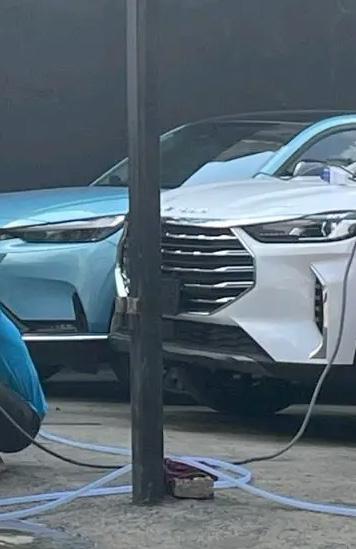
from more than 20 made in China EV models on offer from several companies and startups in Ghana. The majority of countries in Africa, excluding those from east and south Africa, drive on the same side of the road as China. Therefore, it is easy for dealers to find models to import directly from China and start offering them in the local market without waiting for official dealerships to bring in those same models.
The Chinese market is also our best bet to bring affordable EVs to Africa. And with the right policies and regulatory framework, those EVs can land at prices that are fairly competitive with the popular used and almost new vehicles that typically dominate vehicle imports in most African countries. Rwanda gives us a perfect example of this. Go Kabisa is bringing Geely’s Geometry E to Rwanda. The Geometry E is in a similar vehicle segment with the Rav 4, which is a very popular vehicle with young professionals in Rwanda. The Geometry E will start from 22M RWF, which is around $20,000. A brand new Geely Geometry E vs an 8-year-old RAV4? The Geometry E is a no-brainer. Kabisa says the cost savings per kilometer driven when charging your EV versus filling up the ICE fuel tank can be up to 85% in Rwanda.
In Zimbabwe and Kenya, the only brand new electric vans you can get officially are the BYD T3 passenger and panel vans. In South Africa you can get the SIAC Maxus eDeliver 3, as well as the DFSK EC35 van. Same thing with pickup trucks. In Kenya, the only electric pickup currently available officially is the JAC T8. Several pickups, also from China, are available in Ghana, and the DFSK EC31 is available in South Africa.

And so, the great shift is starting to happen. Traditionally, the majority of vehicles both new and used on the continent were from Japan and Europe. Now, the Chinese brands (and foreign ones but built in China) are starting to pop up more regularly. Expect this transition to accelerate much faster than previously thought. It’s already happening with ICE vehicles as well as brands from China such as Great Wall Motors. Haval brand is starting to make significant inroads as well.
The arrival of the highly anticipated affordable BYD Seagull, Wuling Bingo, as well as other models already available in China such as the BYD Dolphin and the Atto 3, will help feed some of these markets on the African continent as well, as independent dealers and startups on the continent start to look for more affordable models. This revolution will grow in countries that drive on the same side as China, but will soon spread to other countries that need right-hand drive models once Chinese OEMs ramp up production and add right-hand drive options. There has been lot of attention given to the electric 2-wheeler market on the continent, but there is starting to be some interesting action on the 4-wheeler market in Africa as well. We will be watching this space very closely.

 By Joel Patel
By Joel Patel
Most car owners don’t realize how complicated their vehicles really are. Cars with an internal combustion engine need fluids, and lots of them, to operate smoothly. You probably know about the basics, like engine oil, gasoline, coolant, windshield washer fluid, and transmission fluid. But what about differential fluid, brake fluid, power steering fluid, and air conditioning refrigerant? All of these fluids need to be checked routinely and flushed on a regular schedule.
Depending on your vehicle, you might need some special tools to get to these fluids if you want to replace
them. But if you’re just looking to check what kind of shape they’re in, most are easy to get to.
Since every car is different, you’ll want to follow your owner’s manual to see where you can find these fluids on your specific vehicle and what kind of fluids your car needs.
Gasoline is just one of the many fluids your car needs. Some fluids, like engine oil, transmission oil, and coolant are obvious, but there are a few other obscure ones that

you may not know about. Here’s a list of the eight car fluids that you should keep an eye on:

• Engine Oil
• Transmission Fluid
• Brake Fluid
• Power Steering Fluid
• Differential Oil/Transfer Case Fluid (4WD)

• Coolant
• Window Washer Fluid
• Air Conditioning Refrigerant
This one is the simplest fluid to check. The majority of new cars on the market have a dipstick with an orange or yellow top that can be pulled out. Once the dipstick is out, you’ll want to check the dipstick to see what color the engine oil is – a darker, black color signifies oil that needs to be changed, while a lighter, caramel-colored oil is relatively new.
It’s best to wipe the dipstick with a clean white rag to double-check the color and insert it back into the dipstick tube, before wiping off the oil a few times. You’ll want to keep an eye on the level, which is located at the bottom of the dipstick, to make sure that the engine has enough oil.
It’s best to check engine oil once the car has had time to fully warm-up, but you’ll want to keep the engine off when completing the test.
Depending on what kind of oil you use in your car, you’re looking at changing engine oil every 3,000 miles for conventional oil to 10,000 miles for full synthetics.

Like the engine oil dipstick, the transmission fluid dipstick is located underneath the hood. The dipstick for the transmission is located further back in the engine bay and typically has a different color or a transmission symbol on the actual dipstick. If you can’t find a dipstick, don’t fret. Some modern vehicles have a transmission that’s sealed for life from the factory and don’t require new fluid.
Checking transmission fluid requires the vehicle to be warmed up and running at idle to be checked. With the dipstick pulled out, you’ll want to check the level at the bottom to ensure that there’s enough fluid in the transmission, and clean the dipstick with a white rag or towel to check the color. Healthy transmission fluid will have a red or pink color, while fluid that needs to be changed will have a brown or black look.
Some vehicles require owners to change the transmission oil every 30,000 miles.

Your car’s brake fluid resides in a reservoir underneath the hood. Usually, it’s marked by a black lid with a circular image. It’s usually located close to the firewall. Checking the brake fluid is simple. All you have to do is peek into the reservoir, see what color the brake fluid is, and make sure it’s close to the “full” line. New brake fluid is almost translucent with a golden tint to it.

If your brake fluid is dark brown or black, it needs to be flushed. Low brake fluid is a sign that you could have a leak or that your brakes need to be replaced. Be sure to follow your owner’s manual to use the specific type of brake fluid that your automaker recommends.
Brake fluid mostly depends on driving habits. If you drive a performance vehicle and stomp on the brakes a lot, you’ll want to flush your brake fluid multiple times in a year. For the majority of other drivers, brake fluid should be changed every two years. Owners can purchase test strips to check the quality of the brake fluid.
The reservoir for the power steering system is also located underneath the hood. Most of the time, the power steering reservoir is a darker color than the brake fluid reservoir and the black cap usually has “Power Steering” written on it. Some power

steering reservoirs are clear, which means checking it just requires you to look at the color and fill level.
For dark reservoirs, there’s a little dipstick that’s attached to the cap. You can check the level of the fluid by looking at the leveler on the dipstick. Checking the quality and age of the fluid requires a white rag that you can clean the dipstick with. Power steering fluid is usually red or pink, so anything brown or black needs to be replaced.

Power steering fluid is something that differs depending on the automaker, but a good rule of thumb is every 30,000 miles. If your car has an electric steering system, you don’t have to worry about changing the power steering fluid.
Coolant, as its name implies, helps keep your engine cool and often goes overlooked as it’s out of sight. To check your antifreeze, you’ll have to order an antifreeze coolant tester, which looks like a funky turkey baster. Then, you’ll have to open the radiator cap – only do this when the car is cool! – suck some coolant with the tester, and check the reading. You can also look at the bottom of the radiator cap and inside the radiator to check for signs of sludge or gunk. Some cars have a coolant reservoir that you can check instead of the radiator.
Different automakers use different types of antifreeze, which can make diagnosing bad antifreeze difficult.

You’ll want to follow your owner’s manual to get the correct type of coolant for your vehicle. Most coolant needs to be replaced every three years or 36,000 miles.


Checking air conditioning refrigerants is tricky because it requires special tools. One workaround for this is to purchase a recharge kit, which usually comes with an easy-to-use gauge. These kits require you to attach a coupler to the low-pressure port of your car’s AC system and read the gauge when the air conditioning is running. That’s it! Mostly. There are a few more things you have to do, but it’s that simple.
A good rule of thumb is to check your AC system annually. Skipping a check could mean going without
air conditioning in the summer. If you find that your car’s air conditioning system needs to be recharged consistently, you can check for leaks with a special refrigerant with some UV dye in it, which will glow a certain color under UV light.

Differential oil and transfer case fluid are some of the hardest fluids to check. Most of the time, these fluids are locked away behind fill and drain bolts that need to be removed to check the quality and level of the fluid. We don’t recommend removing either of these unless you know what you’re doing, have extra fluid on hand, and a pump to put new fluid in. For these, it’s best to stick with the automaker’s schedule and regularly check for leaks. Differential oil and transfer case fluid should usually be replaced every 30,000 miles for conventional gear oil and 60,000 miles for synthetic oil.
What is the cost to change all fluids in a car?
When it comes to changing all the fluids in your car, the most expensive part of the job is the fluids themselves. Some vehicles require pricey fluids with extra additives that can add up while using synthetics that will last longer and will drive up the initial cost. With a manual and some help from YouTube, changing all the fluids in your car is a straightforward DIY job, similar to changing your engine’s air filter. If you head to a shop, you could be looking at spending anywhere from $500 to $1,000 to get all of your car’s fluids flushed.
Changing all of the fluids in your car may seem like a difficult task, but checking them is usually straightforward. To get into a groove, you’ll want to check all these fluids every year to stay on top of them — especially before heading on a road trip. When the fluid gets old, it loses its helpful properties and puts components in danger of failing. Routinely checking your fluids may seem like a tedious task, but replacing them every few years is far more affordable than replacing the components they protect. Spend some time checking and replacing the fluids in your car regularly and it will reward you with more years of trouble-free ownership.
 By Dawn Miller and Miles Branman
By Dawn Miller and Miles Branman
Over time, headlights will pick up every day dirt and grim just like the rest of your car. It's important not to ignore the headlights when cleaning your car though. Just like the rest of your vehicle, headlights need some TLC. Dirty headlights won't shine properly at night or in the daytime. Before giving them a scrub though, take a few minutes to learn how to clean headlights the right way.
Giving headlights a simple wash with regular car soap or even Windex usually does the trick on that ugly dirt coating. Over time though, even the most meticulously maintained headlights will become foggy. Foggy headlights are just a symptom of the natural aging of your vehicle and not something to worry about. It is something to take care of and a relatively simple thing. You can get the DIY job done with things you probably already have at home. It may sound surprising, but
regular household items like toothpaste, vinegar, and baking soda can work wonders on foggy headlights. Of course, there are all-in-one kits you can buy that can get the job done too, but all this task really requires is some elbow grease. So, let's learn how to clean foggy headlights.

Cleaning your headlights with toothpaste is by far the easiest and quickest way to clean foggy headlights. It's an effective method for cleaning foggy headlights and isn't abrasive. It also doesn't take long.
Step 1: The first step in cleaning your foggy headlights with toothpaste is to wash them and the surrounding surfaces with soap and water. Cleaning any exterior grime from the housings will avoid scratching the
lenses and shows off your hard work when the project is complete.
Step 2: Once the headlights have been thoroughly washed, allow the cleaned portion to dry completely. You don't want moisture to make its way into the headlights.
Step 3: Next, it’s time to bust out that painter’s tape. Avoid using strong adhesive tape so you don’t damage your car’s paint. Make a perimeter of tape around each headlight, leaving all of the actual housing of the headlights exposed. Don't use a strong adhesive tape to avoid damaging the car's paint. You can also tape off your turn signals or leave them exposed for cleaning too. Turn signals don't typically get foggy like headlights do.
Step 4: Once you've taped around each headlight's perimeter, it's time for the toothpaste. The toothpaste method is the easiest and inexpensive. It's also simple. Apply some toothpaste to a soft cloth or a clean rag. Then, spread using circular motions, covering the entire headlight. Be sure to use a plain toothpaste such as Tom's or Arm & Hammer. Anything with flavor crystals or other particles may scratch the headlights.
Step 5: The final step in cleaning your foggy headlights with toothpaste is to rinse. Rinse the housing with water, dry it with a towel, and crack open a beer (cuz you’re done). No seriously, it’s that easy. Toothpaste is slightly abrasive, so applying it to your headlights scrapes away the crud while filling in any scratches. Why do you think five out of five dentists recommend using the stuff to fight plaque?
Another popular headlight cleaning method involves two common household things: baking soda and vinegar. This method is a great pick for extremely foggy headlights. The baking soda and vinegar method is also environmentally friendly and cheap.

Step 1: To get started, wash each headlight carefully with

car soap and water.
Step 2: Next, allow the headlights to air dry completely.
Step 3: Using a clean container, mix together two parts white distilled vinegar and one part baking soda.
Step 4: Cover the container and shake to combine. You can also stir the mixture.
Step 5: Once the mixture is combined, you're ready to start cleaning. Dip in a clean cloth or rag. Then, begin rubbing the baking soda and vinegar mixture on the entire headlight. If necessary, add more of the mixture to ensure a thorough cleaning.

Step 6: When the baking soda and vinegar mixture has been applied to both headlights, rinse completely with water.
Step 7: If need be, you may repeat the steps, making sure to rinse after each application of the baking soda and vinegar mixture.
If using toothpaste seems out there and baking soda and vinegar reminds you of middle school science, you can always pay for a kit. You’ll still need to get your hands dirty (or clean?) with an all-in-one setup, and the results will be about the same as these two popular DIY headlight cleaning methods. Headlight cleaning kits aren't expensive and are widely available.
Why do car headlights turn foggy? Headlights become foggy over time because of the chemical reaction that takes place between exposed plastic and the sun’s ultraviolet rays. Accumulated dirt within the housing can also play a role in turning your headlights from crystal clear to a yellowish hue. Cleaning your car's foggy headlights can transform the overall appearance of your car.
It can go from looking like car that's in need of attention to a show vehicle. More seriously, foggy headlights can drastically impair the effectiveness of your car’s actual bulbs. As more fog builds up, it becomes more difficult to see, especially at night. In other words, foggy headlights should be addressed as soon as possible. It's actually an essential part of your car maintenance regimen.






